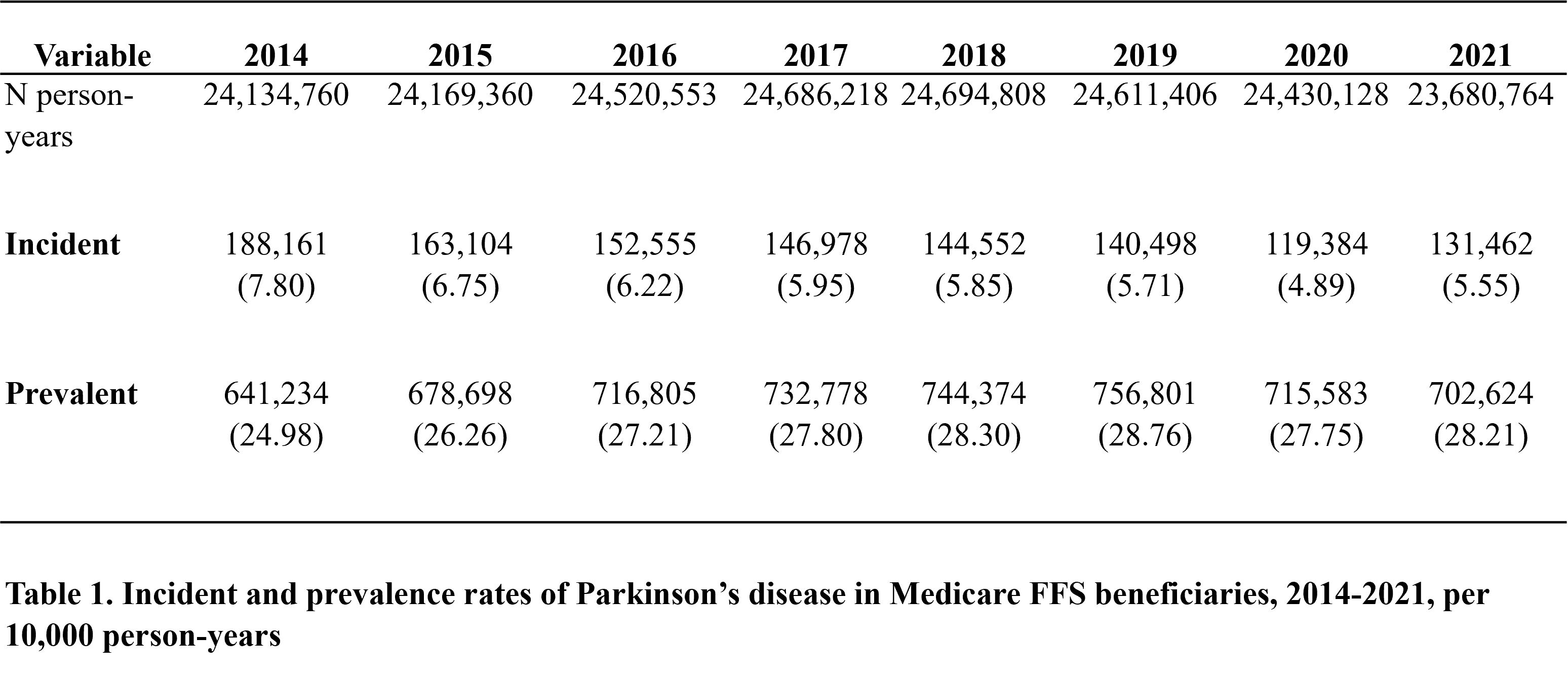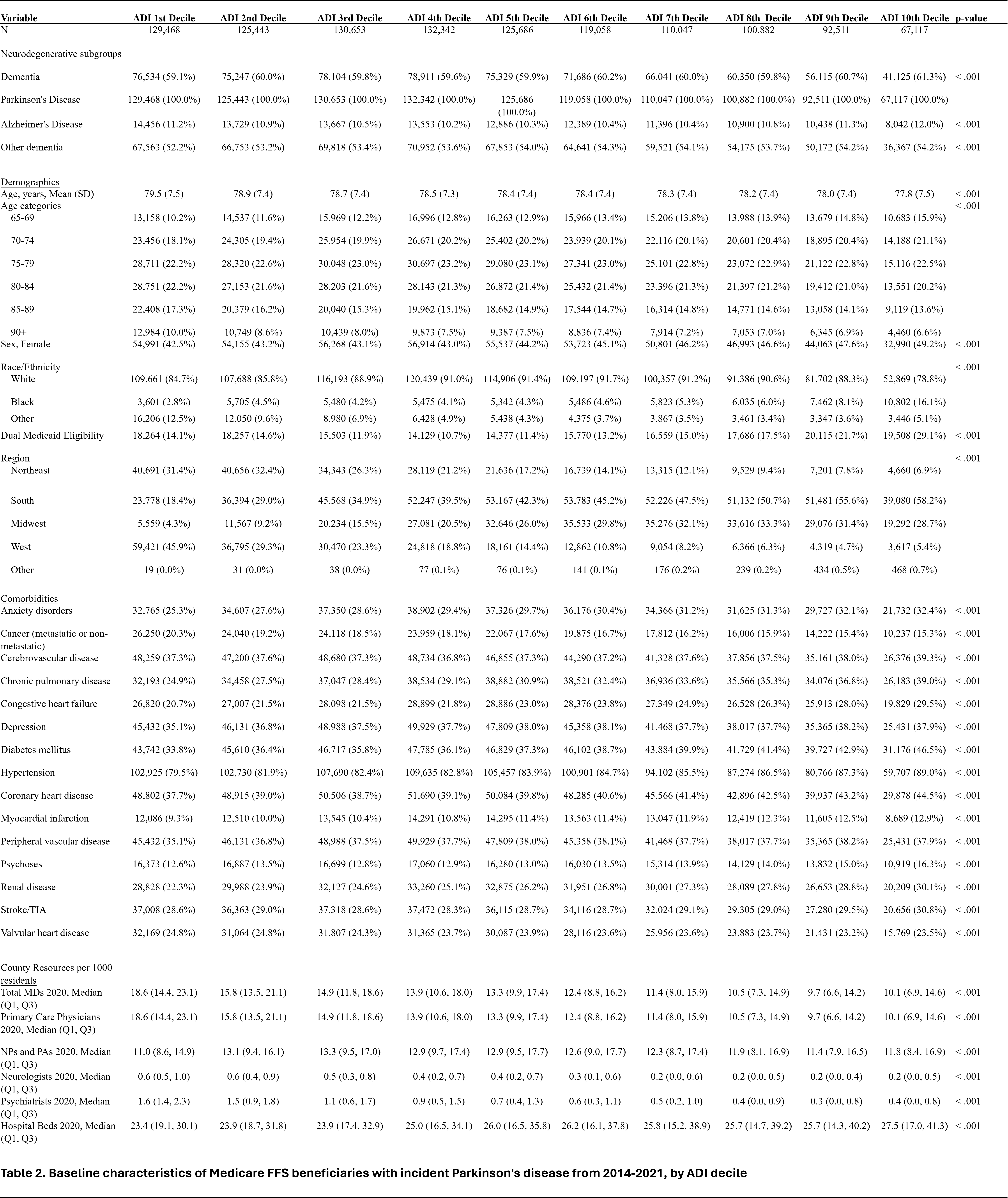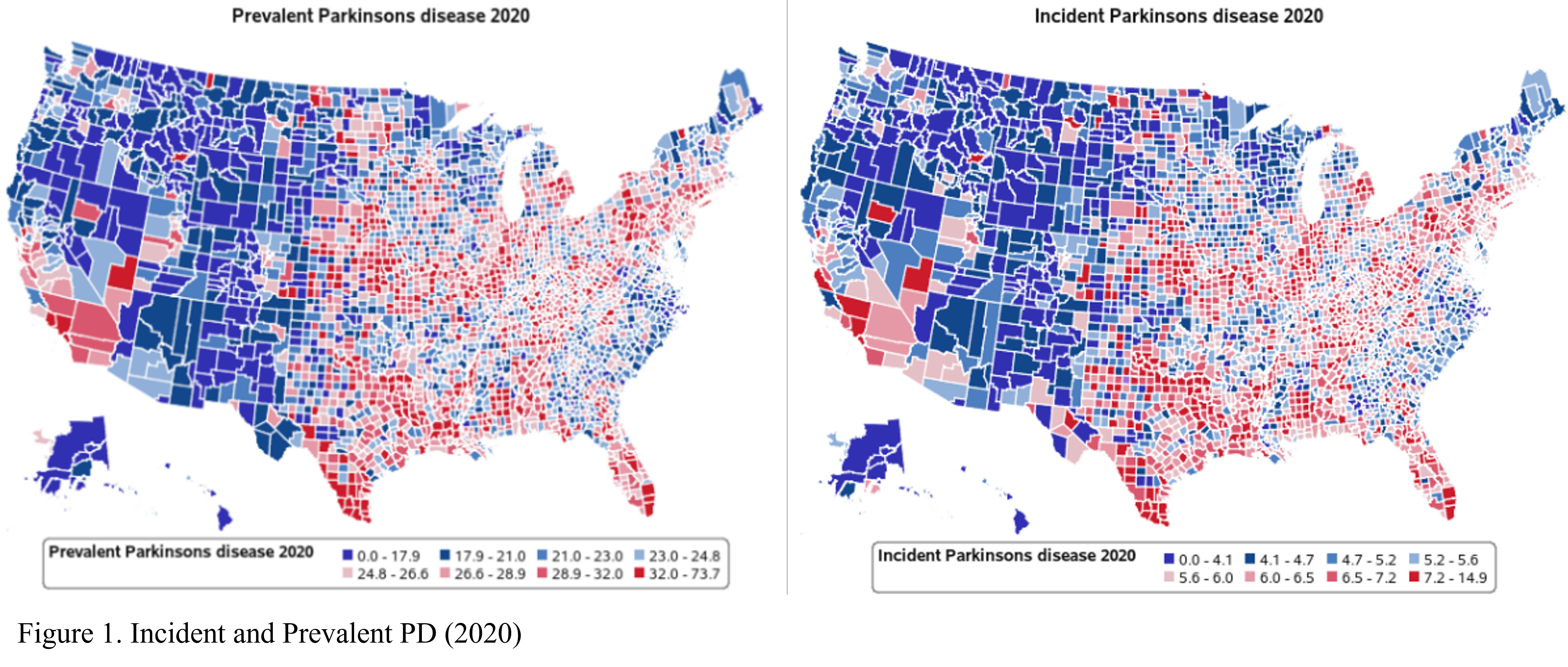Category: Epidemiology
Objective: To evaluate the trends and differences in incidence and prevalence of Parkison’s disease (PD) in Medicare beneficiaries between 2014-2021 across different demographics.
Background: The prevalence of PD is rising, resulting in greater economic and healthcare burden. In the United States, few studies have evaluated how demographic and economic factors are associated with incidence and prevalence of PD diagnosis nationally. Our study uses one of the largest samples to date to demonstrate significant differences in the incidence and prevalence of Medicare beneficiaries with PD by age, sex, race and economic status.
Method: Data from the Centers for Medicare and Medicaid Services (2013-2021) were linked with Area Deprivation Index (ADI; a measure of neighborhood economic status). Medicare beneficiaries with PD were identified using validated ICD-9-CM or ICD-10-CM codes. Incidence and prevalence were reported over time and by age, sex, race/ethnicity, and ADI.
Results: A total of 1,133,207 beneficiaries (Incident PD mean age 78.5) were included. The incidence rates of PD decreased, and the prevalence rate increased over the study period [Table 1]. The incidence were highest for white (88.6%), male individuals (55.3%), and those in the South (40.5%) region [Figure 1]. Medicare beneficiaries living in the highest ADI deciles (representing low neighborhood SES) had the lowest PD incidence and prevalence [Table 2]. Black beneficiaries with PD were more likely to be living in the greatest ADI decile and were threefold more likely than White individuals to be dually eligible for Medicaid. Black individuals were more likely to be diagnosed with dementia (65.7% Black, 59.7% White) and psychosis (20.4% Black, 13.2% White). Beneficiaries with incident PD at the greatest ADI decile had the highest proportion of female (49.2%) and black patients (16.1%), a higher likelihood to be dual Medicaid eligible (29.1%), and the majority were located on the South (58.2%).
Conclusion: The differences in incidence and prevalence rates across sex, race and area deprivation levels suggests that the interplay between biological, social and economic index is associated with PD diagnosis. Our findings can help policy makers and payers make informed decisions for equitable resource allocation.
Table 1
Table 2
Figure 1
To cite this abstract in AMA style:
T. Rosa, S. Mantri, C. Ford, S. Soneji, B. Kaufman, F. Li, B. Grory, Y. Xian, K. Johnson, R. O’Brien, E. O’Brien, J. Lusk, B. Hammill. Incidence and Prevalence of Parkinson’s Disease Among United States Medicare Beneficiaries by Age, Sex, Race/Ethnicity, and Neighborhood Socioeconomic Status 2014-2021 [abstract]. Mov Disord. 2024; 39 (suppl 1). https://www.mdsabstracts.org/abstract/incidence-and-prevalence-of-parkinsons-disease-among-united-states-medicare-beneficiaries-by-age-sex-race-ethnicity-and-neighborhood-socioeconomic-status-2014-2021/. Accessed December 24, 2025.« Back to 2024 International Congress
MDS Abstracts - https://www.mdsabstracts.org/abstract/incidence-and-prevalence-of-parkinsons-disease-among-united-states-medicare-beneficiaries-by-age-sex-race-ethnicity-and-neighborhood-socioeconomic-status-2014-2021/



